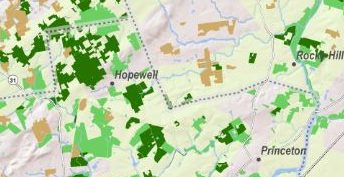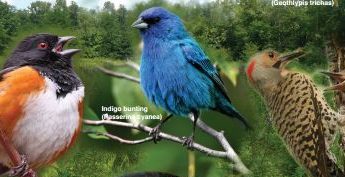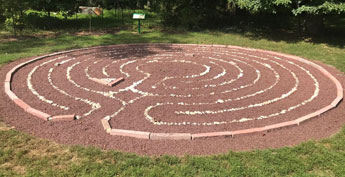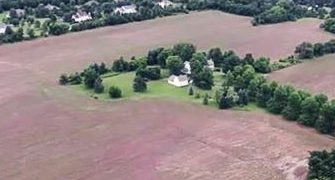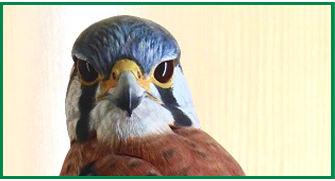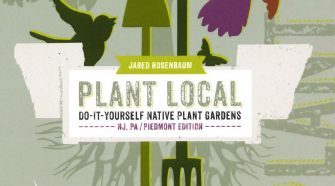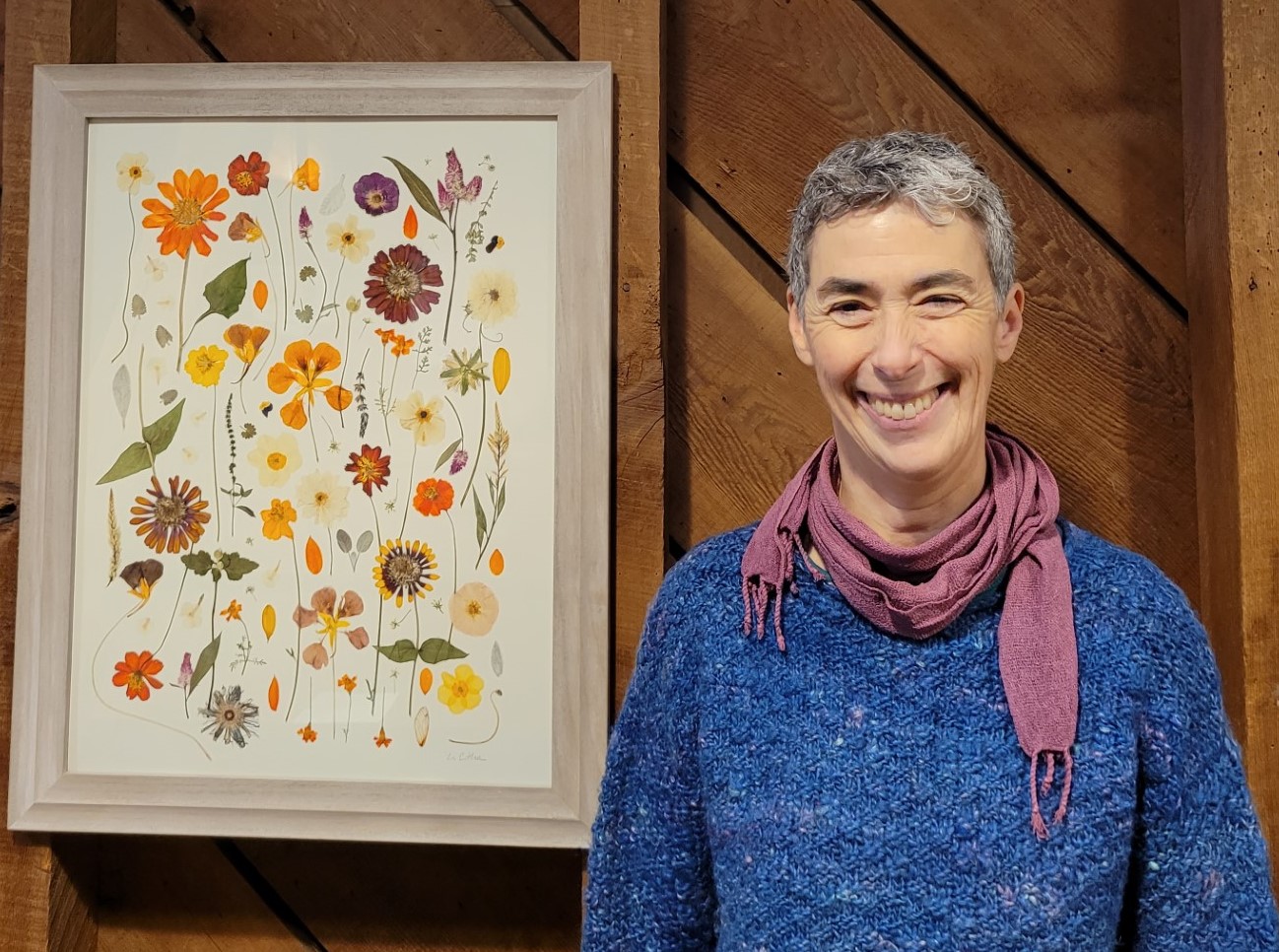JOIN US!
Botanical Florals by Local Artist, Liz Cutler
Thursday, January 18
6:30 pm–8:00 pm
Artist Talk begins at 7:00 p.m.
Weather Date – January 25
Liz and some friends are baking homemade desserts to go with tea and hot chocolate.
Come in from the cold to share cozy conversation.
Please email us at info@drgreenway.org to RSVP and let us know
if you would like to attend!
Retired Princeton Day School teacher Liz Cutler, who led the school’s sustainability club to inspire students to observe and care for nature, is showing her botanical art in memory of her son, Isaac. Together, they walked Greenway Meadows park throughout his lifetime.
Liz, a self-taught artist, turned to the meditative art of collecting and pressing flowers into unique artistic expressions during his illness. She follows the Flower Pressers Ethos to ensure that anything she collects will do no harm to the species or environment.
New artwork that has never been shown before fills a dark wood room in the renovated barn that is the Johnson Education Center, bringing color to the room and a feeling of being surrounded by a wildflower meadow. Come see Liz Cutler’s pressed flower art and hear about her inspiration and meditative creation process.
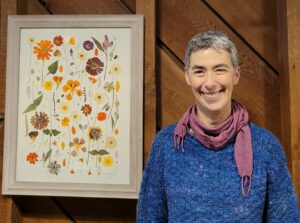
Enjoy the art of all of our artists.
Art is for sale and sales benefit D&R Greenway Land Trust’s work
to preserve and care for land, maintain public trails,
grow food for the hungry, and inspire a conservation ethic. Information is available
at www.drgreenway.org or by calling D&R Greenway at 609-924-4646.
####
About Liz Cutler
“Honey, come in,” my father calls “it’s getting dark.” I’ve been sitting on the grass for three hours next to the towering linden tree watching a line of ants, like the good soldiers they are, move in a pattern up and down the giant trunk. I am seven.
Hours after they cut down our neighbor’s Russian pine and haul away her branches, I am on my knees in the remaining wood chips counting the rings now visible on the stump. She was 72; I am 14.
If I stay in the meadow long enough, can I see the fiddlehead fern unfurl from its tight birth spiral?
We lie, my eight-year-old son and I, on the smooth Precambrian rock, part of the Canadian Shield, warming our backs, and we watch the clouds. “Tell me again the difference between cirrus and stratus, Mom, ok? That one looks like a dragon.” I am 46.
I slip away from our house for a few minutes hoping for a little respite. Our son, now 26, is in the final stages of brain cancer. I walk through the meadow, along the creek, around the block, or into the garden to rub my hands through the mint, bring them to my face and inhale, always gathering gathering, gathering: wild blossoms, silver grass, ground cherry leaves cut into careful patterns by hungry flea beetles, the first tiny maple seeds, the glittery wings of a dead cicada, or an errant blue jay feather that floats to the path. Looking closely, I count the Fibonacci numbers in the orange zinnia on my neighbor’s lawn. I am 65.
I press these gathered treasures, magnificence in the minute, between pages of white paper, weighted down by my sons’ high school chemistry and physics textbooks. “Be patient,” say the flowers, “and in a few days we will be papery and stiff, ready for you to give us a second life in your art.” My youngest son has taught me how to slow down, how to wait, how to take one beautiful moment, breathe it in, hold it close.
Had you asked, I would have said I didn’t have an artistic cell in my body. I never took an art or a science class beyond what was required in school, but the beauty of each acorn and shell, each wildflower and weed calls from me curiosity and a hidden creativity, providing exactly the balm a mother needs in those long silent hours of watching her son die. Off duty tonight, my husband at Isaac’s bedside, I hide at the desk newly stashed in the walk-in closet and lose myself in pressed flower composition. I place purple next to yellow, drawn like an insect to the contrast, a strategy flowers use to raise their chances of pollination. Sometimes my artwork is place-based, an attempt to capture the look of a Cape Cod meadow on a single bright fall day or a mid-summer dune along the southern tip of Lake Michigan or the feeling of nightfall in a June garden on my street. Every part of this practice is a meditation: the close looking at nature, the identification, the pressing and waiting, the careful placement and replacement of the dried flowers and leaves, the meticulous gluing with tweezers, toothpicks, paintbrush, and Q-tips.
A year later, I have 25 large pieces and I have been asked to do a show at the Princeton Public Library. In writing the artist statement, I realize that this practice is the creative manifestation of my decades of observing and of the professional work I have been doing my entire life: helping children fall in love with nature, first through literature, then through creating a whole school sustainability program, and now coaching schools across the country. People only save what they love.
Humans were evolved to be in nature, but few of us really interact with it. We walk past it, we use it, mow it, own it, waste it, and then retreat to our screens. Research shows that the more time we spend in nature, the healthier we are physically and psychologically. The first assignment in Song of the Wild, the high school nature and literature course I taught for 35 years, was to have students sit on the ground and look at one square foot of earth—closely—for 20 minutes and then write about what they saw, heard, felt, and smelled. They were astonished. I wasn’t. Most of us look at nature, but we don’t actually see it. That only happens by slowing down. What I love about teaching literature is offering opportunities for students to grapple with the deepest parts of being human: our relationship to each other and to the planet, helping them understand themselves as individuals and as part of a larger pattern, like the petals on that orange zinnia.
But the part of my teaching career that challenged and taught me the most was creating an entire school sustainability program from nothing, working simultaneously on curriculum, institutional behavior, and facilities. I learned how to talk with everyone from custodians and food service workers to the faculty and board of trustees, connecting with each in their own sphere about climate change and climate justice. It enlarged the patience I’d learned from caring for my disabled son to a place where I could listen first and talk second, advocating for the natural world I loved. When I began the school program, sustainability was hardly a word, much less a discipline, and people were just beginning to understand climate change. All I knew at first was that my goal was to help others fall in love with nature, to help people ask the question: “where does it come from and where does it go” in every part of our lives. From my earliest memories, I have loved observing, contemplating, and learning about the natural world. It has become a habit of the heart.
I collect carefully, conscious of which flowers are ephemeral or how many are growing in a patch, and whether my taking one or two will matter to their survival. As I write this, the late afternoon light throws long shadows from trees now bare of their leaves, stark, winter closing in. It’s a different kind of beauty. There is nothing left to pick, but my closet desk drawers burst with labeled bags of sunshine: flowers and leaves, stems and stamens, even an intact eastern Swallowtail butterfly I found dead on the road. They beg to be slowly and quietly drawn into a picture for a second life through art, to remind me that mine is a story of grace and gratitude, and to help others see, perhaps for the first time, the beauty of nature. I lose myself in the meditation.”
About D&R Greenway Land Trust: D&R Greenway Land Trust is an accredited nonprofit that has reached a new milestone of over 22,000 acres of land preserved throughout central New Jersey since 1989. By protecting land in perpetuity and creating public trails, it gives everyone the opportunity to enjoy the great outdoors. The land trust’s preserved farms and community gardens provide local organic food for residents of the region—including those most in need. Through strategic land conservation and stewardship, D&R Greenway combats climate change, protects birds and wildlife, and ensures clean drinking water for future generations.
D&R Greenway’s mission is centered on connecting land with people from all walks of life. Visit our Facebook and Instagram pages and www.drgreenway.org to learn about the organization’s latest news and in-person and virtual programs. D&R Greenway Land Trust, One Preservation Place, Princeton NJ 08540. The best way to reach D&R Greenway staff is by sending an e-mail to info@drgreenway.org or by calling D&R Greenway at 609-924-4646.

